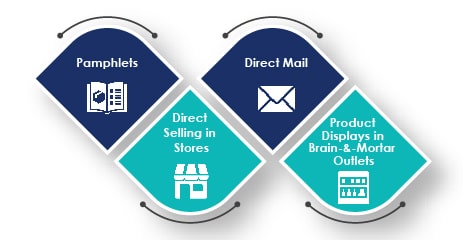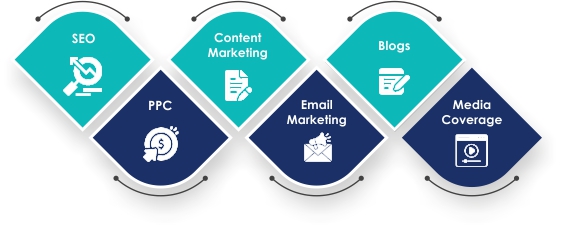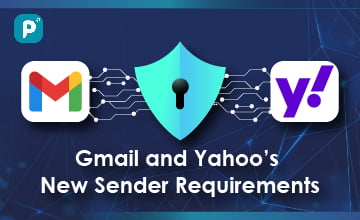Over the years marketing has evolved to be both a science and an art. One needs to be extremely creative in their approach but be precise at the same time. By effectively considering the customers and the market, the right strategies to reach them can be established.
There are two main forms of marketing that companies depend on namely- push and pull marketing strategies. These strategies complement each other and must be used as per the nature of the business.
Let us understand both marketing strategies in detail:
What is Push Marketing?
Push marketing trying to sell directly to the buyers, bypassing other distribution channels. The main aim of push marketing is to get the products seen by customers at the point of purchase. This may be achieved through several channels like standard mail, social media platforms, or in stores.
It is worth noting that push marketing can be applied through professional solutions and B2C channels. For instance, in the B2B medium, a manufacturer or wholesaler may try to convince a retail store to stock its products by including samples in an in-person promotion plan.

Significance
Push marketing has proven to be extremely successful when marketing campaigns aimed at promoting goods and services that already witness demand. This marketing strategy is an effective measure to create immediate results and make a strong impression on potential clients. Push marketing helps attract new customers although it may be pricey and the results are short-term.
Examples of push marketing include:

- Pamphlets
- Direct selling in stores
- Direct mail
- Product displays in brain-and-mortar outlets
What is Pull Marketing?
This marketing strategy focuses on increasing the total number of buyers who wish to buy a product. It mostly comprises consumers seeking a product to get retailers to stock it. Brands that use pull marketing reach the customers through a direct marketing channel, the customers then approach a retailer and buy the product. This permits the producer to sell the product and restock as per the market demand.
Through pull marketing, a business can promote its offering even before it is made available for purchase. It helps save costs by reducing the number of units that they produce before the product launches.
Significance
A pull marketing campaign is typically different from a conventional advertising channel and focuses on a particular product or service. Pull marketing is mostly integral for products that are unique in a certain way.

- SEO
- PPC
- Content marketing
- Email marketing
- Blogs
- Media coverage
Deciding between a Push and Pull Marketing Approach
Although today marketers are turning towards newer marketing forms through pull marketing, traditional advertising forms are still being used in some manner or the other.
When to use push marketing?
When a business has a specialized product or service, push marketing is the best bet. Directly targeting the customers increases the chances of them interacting with the advertisement since it is relevant and specific.
Thus, push marketing must be used when:
- Seeking to create a new sales channel
- Aiming to improve awareness of the employer’s brand
- Working within a niche market
- Seeking short-term sales
When to use pull marketing?
In the case of a new brand or a start-up where the company is striving to grow, pull marketing is widely used to drive brand awareness and boost reputation. There is a higher level of engagement through pull marketing, as it’s broader and includes fewer conversions to sales.
To sum up, pull marketing is used when:
- When trying to build a long-term customer relationship
- Target consumers are aware of what they want.
- In the case of a new brand
When to use both marketing strategies?
Most marketers use a combination of two and there are certain industries where the mix works best. In B2B marketing, for instance, both push and pull strategies may be used. Planning and managing several marketing campaigns for multiple channels can be expensive, however, it is more effective than channelling all marketing efforts on one single channel.
To sum up, the key difference between push and pull marketing lies in how one wishes to approach the customers. Both strategies are used by marketing professionals as a part of their business plan. There are two main things to consider when choosing push or pull marketing. First is demand and the other is how the company wishes to reach the customers.
Conclusion
Choosing between push and pull marketing is a critical decision for businesses. Push marketing is effective for immediate results and creating impact, suitable for products with existing demand. It’s beneficial for new sales channels, brand awareness, and niche markets. On the other hand, pull marketing focuses on long-term customer relationships, often used by new brands for increasing awareness through channels like SEO and PPC.
In the evolving marketing landscape, a hybrid approach combining push and pull strategies, especially in B2B marketing, can yield positive outcomes. While managing multiple campaigns incurs costs, the synergistic impact often outweighs the investment. Ultimately, success depends on understanding product/service demand and connecting effectively with the target audience.
Elevate your business to new heights! Dive into our all-inclusive digital marketing service and experience a remarkable surge in your sales!
All images belong to their respective owners. Please email [email protected] if removal is required.




